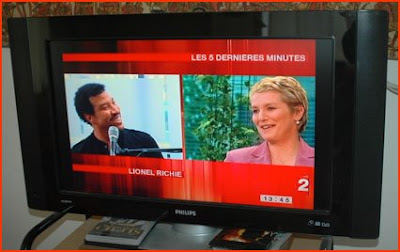An ordinary Christian believes in God. But the thing that characterizes a true Man of God is his belief in miracles.

The bishop of Orléans,
André Fort, is such a believer. Defending the theories of His Fallible Holiness Benny XVI, Andy the Strongman (the French adjective
fort means "strong") has just announced that
AIDS viruses have the miraculous capability of passing through the latex material out of which condoms are made. Now, I don't know where Andy obtained his facts. There must be some kind of an ecclesiastic laboratory in Orléans in which dynamic viruses can be observed bursting through condoms with the same divine energy as
Joan of Arc breaking through the walls of the besieged city on 8 May 1492.

In the eyes of the enlightened bishop, condoms are holey... not to be confused with holy. If a man were dying of thirst after spending 40 days and 40 nights in the desert, he couldn't even use a condom to collect morning dew to drink. If you jumped into the ocean from a sinking ship, you couldn't even blow up a condom and use it as an inflated raft, because it would fizzle flat like the tube of a bike that has just run over a nail. A lady caught in foul weather while returning on foot from her hairdresser couldn't even drag a condom down over her perm to protect it from the rain, because the droplets would get through the latex skin like a horde of uncouth viruses breaking through the windows of a jewelry boutique. The Church has known all along that
AIDS viruses have the same magical powers as the precious solidified blood that you find in tiny glass vials in Mediterranean churches. The faithful only have to conjure up the divine image in their minds, and the blood liquefies like a gelato in the sun of Naples.

If Benny and Andy were nice guys, prepared to assist uninformed fornicators, they would reveal holy secrets making it possible to waterproof condoms by the use of prayer, or maybe transform sperm into harmless holy water, or a miraculous trick of that kind. Another solution: Condom users in Africa and elsewhere could stock up with the prestige
Driza-Bone ® product from Down Under... used by the
Drover in the
Australia movie. It's high-priced protection, sure, but 100% safe. And, as
Nicole puts it, women like the rough outback feel.
BREAKING NEWS: You might recall the hilarious Monty Python sketch of scenes from a
Ministry of Silly Walks [display]. These days, I have the impression that Catholic prelates throughout the world have been participating in a
Mission of Silly Statements.
André Vingt-Trois started the ball rolling. He's the archbishop of Paris whose attitude towards medical research was mentioned in my article of 26 November 2007 entitled
Red can be wrong [display].
 [An archbishop's colorful head and shoulders can look like a condom.]
[An archbishop's colorful head and shoulders can look like a condom.]A few weeks ago, on
Women's Day (March 8), this Andy 23 was awarded the
Macho of the year prize for his amazing declaration of 6 November 2008 on Radio Notre-Dame :
"The most difficult thing is finding trained women. It's more than just wearing a skirt. It's a matter of having something in their heads." Then, in January of this year, the pope canceled the excommunications affecting a band of antiquated bishops, one of whom immediately aired alarming and unlawful revisionist views of the Shoah. A few days ago, Benny 16 gave us his unforgettable opinion on condoms, and he was backed up, first, by
Di Falco then, yesterday, by Andy of Orléans.

Well, during the few hours since I ended the above article, another major ecclesiastic has jumped on the Silly Statements bandwagon, Brazil's
Dadeus Grings, who claimed publicly that the major victims of Hitler's death camps were not Jews. Here are the words of our joyous Daddy Gringo:
"The Jews talk about six million people killed. But how many Catholics were victims of the Holocaust? They were 22 million in all.''I believe, seriously, that all these silly statements form the lyrics of a pathetic swan song from men who realize, maybe only subconsciously for the moment, that their old-fashioned system of Christian faith is doomed in the forthcoming future, for it has been overtaken by information, knowledge and scientific wisdom. Their declarations are fragments of a funeral dirge.
 Click the photo to hear a second extract, Shotgun, which has an infectious lilting melody. I like the unexpected style of the invitation to drop in: There's no shotgun hanging around my door tonight. Those words are incongruous in a land where you can now get thrown into jail for owning a rifle to shoot rabbits.
Click the photo to hear a second extract, Shotgun, which has an infectious lilting melody. I like the unexpected style of the invitation to drop in: There's no shotgun hanging around my door tonight. Those words are incongruous in a land where you can now get thrown into jail for owning a rifle to shoot rabbits.















































